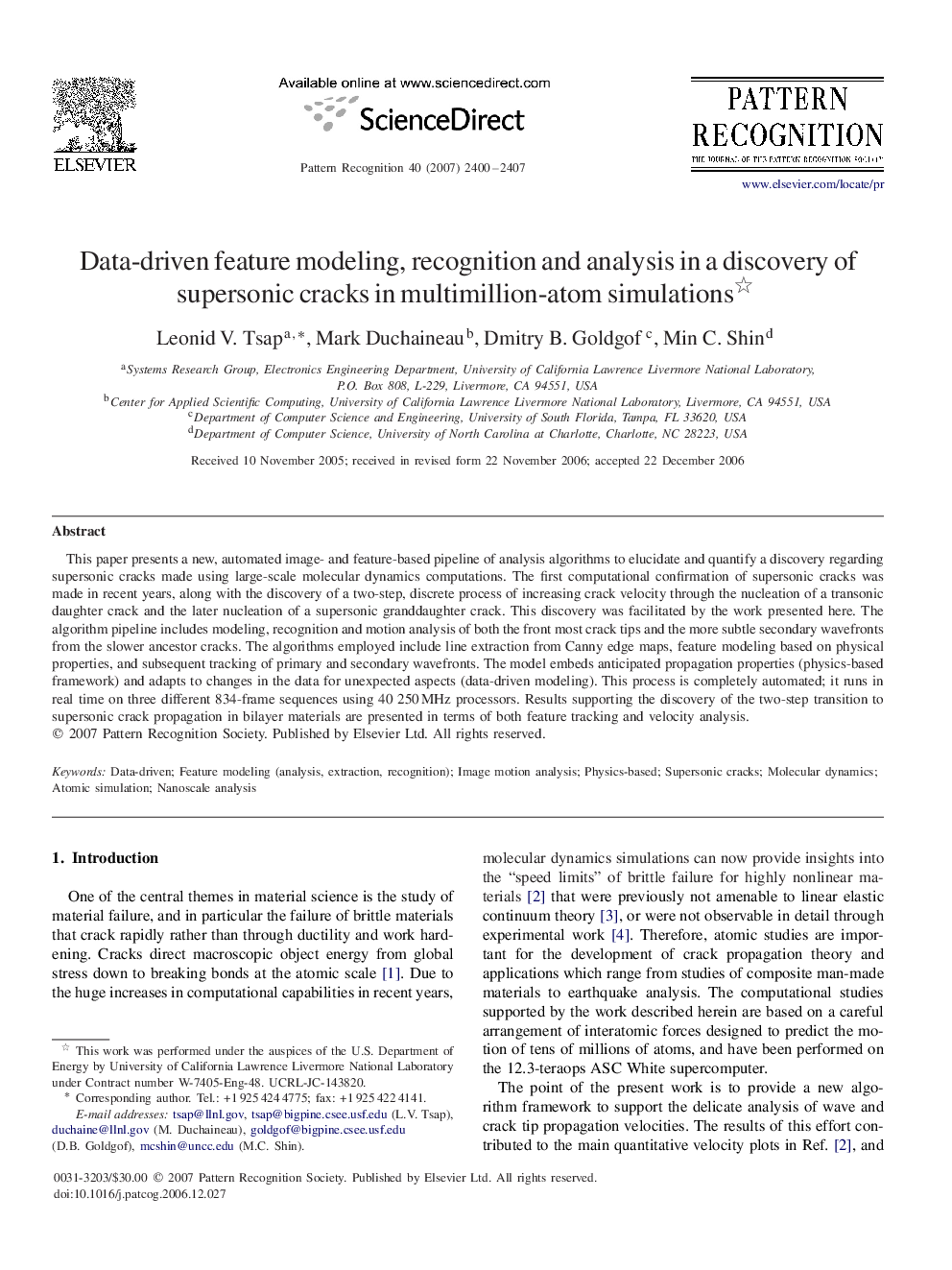| Article ID | Journal | Published Year | Pages | File Type |
|---|---|---|---|---|
| 531585 | Pattern Recognition | 2007 | 8 Pages |
This paper presents a new, automated image- and feature-based pipeline of analysis algorithms to elucidate and quantify a discovery regarding supersonic cracks made using large-scale molecular dynamics computations. The first computational confirmation of supersonic cracks was made in recent years, along with the discovery of a two-step, discrete process of increasing crack velocity through the nucleation of a transonic daughter crack and the later nucleation of a supersonic granddaughter crack. This discovery was facilitated by the work presented here. The algorithm pipeline includes modeling, recognition and motion analysis of both the front most crack tips and the more subtle secondary wavefronts from the slower ancestor cracks. The algorithms employed include line extraction from Canny edge maps, feature modeling based on physical properties, and subsequent tracking of primary and secondary wavefronts. The model embeds anticipated propagation properties (physics-based framework) and adapts to changes in the data for unexpected aspects (data-driven modeling). This process is completely automated; it runs in real time on three different 834-frame sequences using 40 250 MHz processors. Results supporting the discovery of the two-step transition to supersonic crack propagation in bilayer materials are presented in terms of both feature tracking and velocity analysis.
